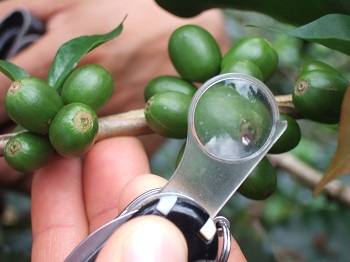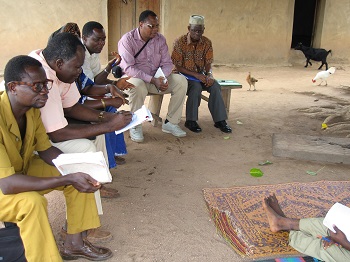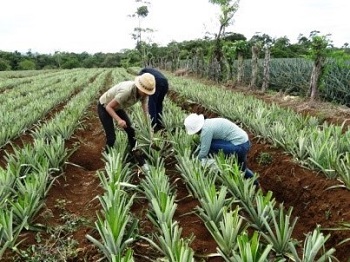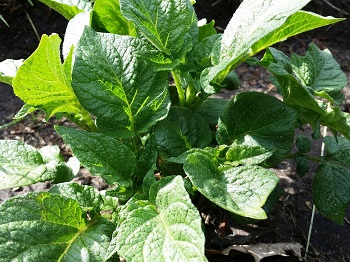Integrated Pest Management (IPM)
Integrated Pest Management (IPM) is an approach to managing pests, diseases or weeds in which chemical pesticides are used only as a last resort, if at all. It tackles pests and diseases through the use of a combination of different control methods, based on good crop husbandry (cultural and agronomic practices), physical, plant breeding or biological control methods, underpinned by effective pest, weed and disease monitoring strategies.
The aim is to manage insect and mite pests, diseases and weeds by integrating a range of IPM tools in order to prevent them from reaching levels which start to hurt the farmer economically. This does not mean eliminating every pest insect or unwanted weed plant or disease-causing organism!
Biological and Ecological Processes
Effective IPM farmers make the best use of biological and ecological processes and interactions in their fields, above and below ground, to grow a healthy crop and to minimise the factors which encourage pests, diseases and weeds. When additional control is needed, there is a wide range of methods which can be used, without resorting to spraying Highly Hazardous Pesticides. Many IPM farmer groups and projects also aim to reduce or phase out synthetic pesticide use completely, whilst maintaining yields and profitability.
The ecological principles behind IPM are equally relevant to organic and non-organic farming systems and to non-agricultural contexts, e.g. gardens, parks, public spaces:
- Use preventative methods to avoid or reduce pest, disease and weed problems from the start
- Make maximum use of naturally occurring pest control
- Regularly observe fields to assess pest presence and decide whether extra interventions may be needed IF pest, disease or weed numbers reach critical levels
- When direct control measures are needed, select those that will not disrupt beneficial organisms
Good Husbandry Practices
Preventative methods are good husbandry practices that ensure a healthy and resilient crop. Growing a healthy crop starts with: selecting a good field or site; choosing a suitable crop variety for the location; preparing a good seed bed for the crop, whether sown direct or in a nursery bed. Strong, healthy plants are then better able to withstand pest and disease attack, as well as adverse growing conditions. This means paying attention to aspects of soil health, water supply and the broader farm environment and choice and sequencing of crops.
Good field hygiene practices are essential to keep many pests and diseases in check. These start with using clean, healthy seed or planting material. Careful removal of crop remains after harvest prevents any pests or disease spores from surviving to infest the following crop.
Natural Biological Control
Farmers can take advantage of natural biological control by encouraging predatory and parasitic insects (known as natural enemies) which feed on pests. Planting suitable and varied vegetation habitat, including flowering plants and hedgerows, in and around fields provides feeding, shelter and nesting sites for many beneficial insects. Many of these are easily killed by pesticides so avoiding use of broad-spectrum products harmful to many types of insect is very important to conserve natural enemies.
If preventative methods and natural enemies alone are not sufficient to manage a particular problem, additional interventions can be made. These include:
- biopesticides based on microbial agents which infect and kill specific insect pests
- release of predator or parasitic natural enemies reared for this purpose
- home-made or commercial botanical extracts or other natural substances to repel or kill pests
- trapping methods or physical barriers to exclude pests
- pheromone sex attractants to disrupt mating and pest reproduction
To make these IPM tactics work well, farmer training in ecological principles, IPM methods and regular field monitoring is essential for informed decision making. With its partners, PAN UK makes use of the Farmer Field School IPM training approach, based on practical, discovery-learning methods to build farmers’ skills and confidence and foster group actions.
IPM Resources
Growing Coffee Without Endosulfan
See our project pages on Growing Coffee Without Endosulfan for videos and farmer experiences in Latin America on using biological control, good cultural practices, field monitoring and trapping methods instead of highly hazardous pesticides.
Cotton Food Spray Method
See our cotton pages on IPM training via Farmer Field Schools in Africa, as well as use of the food spray method to attract predatory insects into cotton field to feed on pests. These methods are helping smallholder farmers stop the use of HHP insecticides, including endosulfan.
Phasing Out HHPs in Costa Rica
See our Costa Rican HHP project page for information on field trials of biological and botanical alternatives to HHP fungicides in coffee and to HHP nematicides and the HHP herbicide, paraquat, in pineapples.
Alternatives to Carbosulfan
Read our IPM factsheets on alternatives to carbosulfan for control of whitefly in tomato and for control of Colorado beetle in potato.




